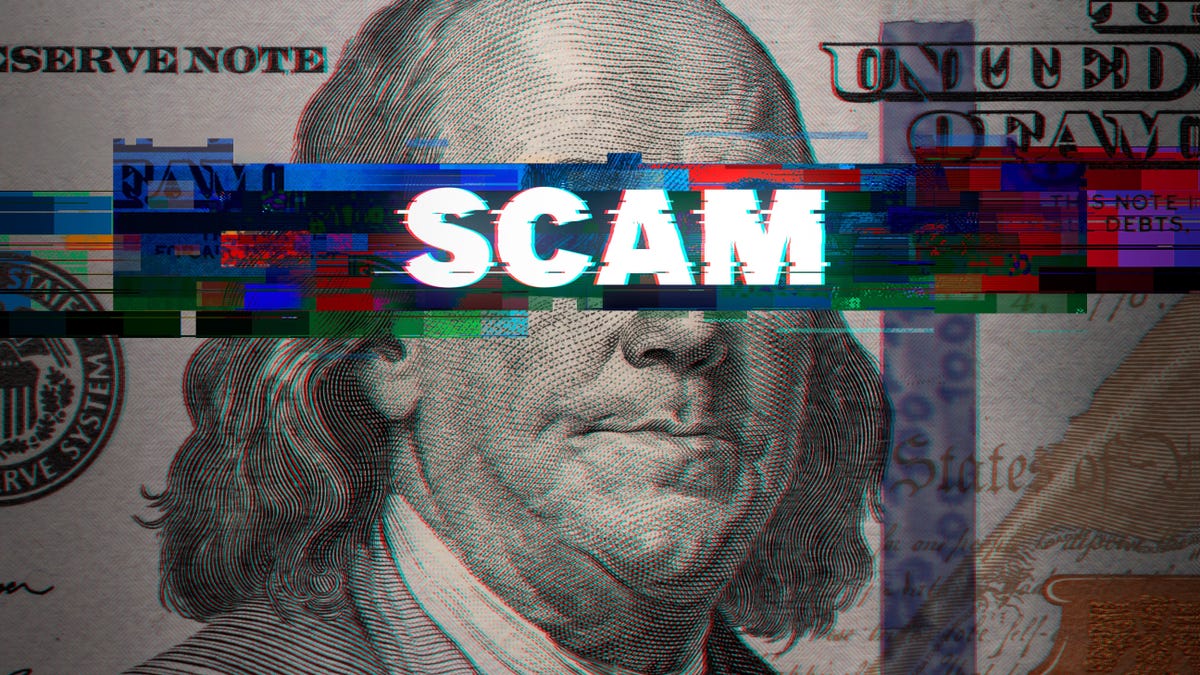10 of the Biggest Scams of 2022
If you weren’t able to keep up with all the scams out there this year, it’s understandable. From tricky ones in which the scammer sends you money to something called “pig butchering,” there were a lot of ways people...


Image: Cinemato (Shutterstock)
If you weren’t able to keep up with all the scams out there this year, it’s understandable. From tricky ones in which the scammer sends you money to something called “pig butchering,” there were a lot of ways people tried to trick us out of our hard-earned money in 2022. Here are the most important—and still relevant—scams of the past year to know about so you can continue to protect yourself from them in the year to come.

Photo: Michael Vi (Shutterstock)
If you ever see someone send you money “by accident” in 2023, don’t cash it in or give it back. This year saw many scammers deliberately send money to victims and make it out to be a mistake. Here’s how it works:
According to the Better Business Bureau (BBB), scammers buy stolen credit cards from the dark web and connect them to their payment app of choice. Then, they start sending random people money by “accident” and proceed to message them asking for the money back, saying it was sent by mistake. The scammers change out the stolen credit cards from the payment apps and connect their own personal cards instead, and wait for the victims to send them “clean” (non-stolen) money back.
If you are part of the group who sent money back, you didn’t actually send them the same, say, $500 from the stolen credit cards back to them. The money you’re sending is from your account. Eventually, the payment apps will catch on to the stolen credit card fraud because the original owners of the cards from the dark web will report their cards stolen—and those are backed by their bank. The stolen funds will eventually be removed from your account (because that’s where it ended up), leaving you $500 poorer and the scammer $500 richer.

Photo: Sheila Fitzgerald (Shutterstock)
Gift cards have always been targets by scammers, but 2022 saw two new ingenious techniques to trick victims out of their gift card money. First, scammers are printing their own barcodes and placing them over the real ones, so once the card is activated and money from a victim is put onto it, the money goes to the scammer’s account instead of the gift card.
The other technique targeted specifically Apple gift cards, but don’t be surprised if scammers in 2023 expand the technique to other brands: They white-out the last few digits of the gift card’s number and put it back on the shelf. Once a victim picked it up and put money on it, they would not be able to use it without knowing the last few numbers of the card. But the scammers knew all the numbers and would use the card once the money was deposited.

Photo: Dominique James (Shutterstock)
The Powerball climbed to over a billion dollars in 2022, and many people hoped to win the big prize despite the odds being 1 in 292 million. Scammers, however, took advantage of the hype and targeted victims by telling them what they wanted to hear: That they had won. Scammers provided victims with a “claim check number” with instructions to go to local Dollar General Stores to claim their prize—but first, they had to wire a sum of money to claim the “prize” or to make an “insurance deposit” to make sure the funds are released to the proper winner. Obviously, they had not won and there was no “fee,” just money sent to scammers for their hard work.

Photo: r.classen (Shutterstock)
Scammers even pretend to be kidnappers in this scheme:
According to the Los Angeles Times, the perpetrators of these schemes will call parents and attempt to get them to believe their child has been abducted, and demand an immediate ransom payment. All the while, the child is still safe at school or with the babysitter—but the scammers are hoping you don’t find that out until after you’ve paid up.
As FBI agent Erik Arbuthnot told the LA Times, this scam usually originates with inmates in foreign prisons. The scammers will simply cold call Americans, hoping to land on a person with kids.
When your phone rings, you’ll hear a child screaming something like “Mommy, daddy, help me!” The scammers are hoping you’ll say your child’s name, so they can use it to play along. The “kidnapper” will then tell you the horrible things they’ll do to your child if you don’t send money to them right away.

Photo: fizkes (Shutterstock)
Student loan forgiveness was a hot topic for much of 2022, and scammers took advantage by pretending to be companies (and even President Joe Biden himself) to offer “services” for loan discharge, forgiveness, cancelation, or debt relief. Obviously, none of this was real. You never have to pay for help with your federal student aid.
If a business reaches you to offer you any kind of service, always check if the name of their company comes up in the Better Business Bureau Scam Tracker and Google their name plus “scam” to see what comes up.

Photo: JLauer (Shutterstock)
Was 2022 the year you, too, were offered a free Yeti cooler for taking a Dick’s Sporting Goods survey?
What made this specific email scam special was the fact that it was able to reach many people by getting around Gmail’s spam filter, which exposed more people to this type of scam than usual. Luckily, whether it’s a Yeti cooler or AirPods headphones that’s being showcased, there are some simple ways to not fall prey to these type of scams.
Read more here on how to tell if a too-good-to-be-true email really is.

Photo: Natee Meepian (Shutterstock)
Recovery scams were a new concept to many people in 2022, including me. Basically, once you are scammed, you’re on some sort of “sucker’s list” that scammers share within themselves in some dark web equivalent of Facebook. You are contacted by them, pretending to be recovery scam gurus or companies who dedicate themselves to the art of retrieving people’s money from scams for a fee. Except that they’re just more scammers.

Photo: CHIRATH PHOTO (Shutterstock)
The “Pig Butchering” scam is a new approach in strategy for scammers, pivoting from casting a wide net to see what they get, to investing a lot of time and effort into individuals with more money than the average person—or “feeding the pig.” Here’s how it works:
Pig Butchering is a scam where scammers target victims and form a friendly relationship for days or weeks, presenting themselves as financially stable individuals, eventually encouraging them to invest in crypto before convincing them to transfer their assets to a fraudulent website the scammer controls.
The scam relies heavily on building strong rapport with the victim and it’s what makes the technique unique: Most victims consider the scammers “friends” and build a foundation that is not based on investing, money, or crypto. They often lure their victims by posing as young, attractive people.
The scammer will direct the conversation to money once enough trust is formed in the relationship, while attributing their financial stability to crypto. Eventually, they convince the victim to buy crypto from a genuine site, but persuade them to transfer the crypto to a fake crypto website the scammer controls. The victim is shown amazing “returns” to their investments, ideally to inspire them to keep investing on the fake crypto website.

Photo: XanderSt (Shutterstock)
Did you get a message similar to “Did you approve this $500 purchase?” in 2022? You may have been targeted by a scam:
Since there isn’t an actual transaction, people usually respond back with a “no” (we’ve covered why you should not do that). Then they tell you your money is being drained out of your account and the solution is to transfer it out by sending it to “yourself” through Zelle.
The trick here is one that would work on victims who are not very familiarized with Zelle. The “banker” asks the victim to send the money to an account the scammer created using the victim’s name, but changed the phone number on the account to the scammer’s phone number. This way, when the victim sends the money, it looks like they’re sending their funds to themselves, but in reality, the money is going to the scammer’s number. It doesn’t matter what the name on the account is—you can change your father’s contact name to “Barack Obama” if you want, but when you call the account, it’s always going to be your dad. What matters is the phone number or email attached to the account.

Photo: Andrey_Popov (Shutterstock)
Another improvement in technology that has helped scammers fill their pockets with more money this year has been the ability to falsify checks:
At its root, the fake check scam works like this: A scammer gives you a fake check that you deposit into your account and convinces you to give them money. This usually works because the checks are seemingly “cleared” by the bank, and you see the money hit your account quickly.
The law is called Regulation CC, and it was passed in 1987. It says banks must let you use at least part of your deposit right away—even before they are able to tell wether it’s real or fake—in order to help fast-track the slow process of check-clearing when people would deposit their paychecks from work in the 1980s. Although technology has made depositing checks more efficient, it has also made fake checks more sophisticated.
“Advanced graphics and printing technologies allow scammers to easily create fraudulent and hard-to-detect counterfeit checks in a matter of minutes, adding a sense of legitimacy to their scams,” the Federal Deposit Insurance Corporation (FDIC) said in a press release. “Fake checks can look so real that it’s very hard for consumers, or even bank employees, to detect.”
Once you think the funds are in your account, the scammers ask you to send them money in different ways, including cash, personal checks, gift cards, wire transfers, or unsafe person-to-person transactions like Zelle, Venmo, or PayPal Friends and Family—all ways that, once your check actually bounces, there’s nothing anyone can do to retrieve your money.
Never trust someone sending you a check and asking you to send back money—whether by wiring money or buying gift cards. Even if you see the money deposited in your account, it can still be taken away if it ends up being a fraudulent check.

 JaneWalter
JaneWalter 
































